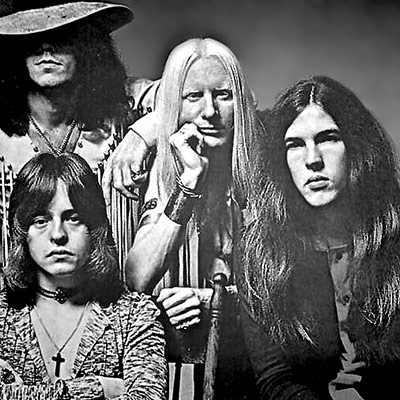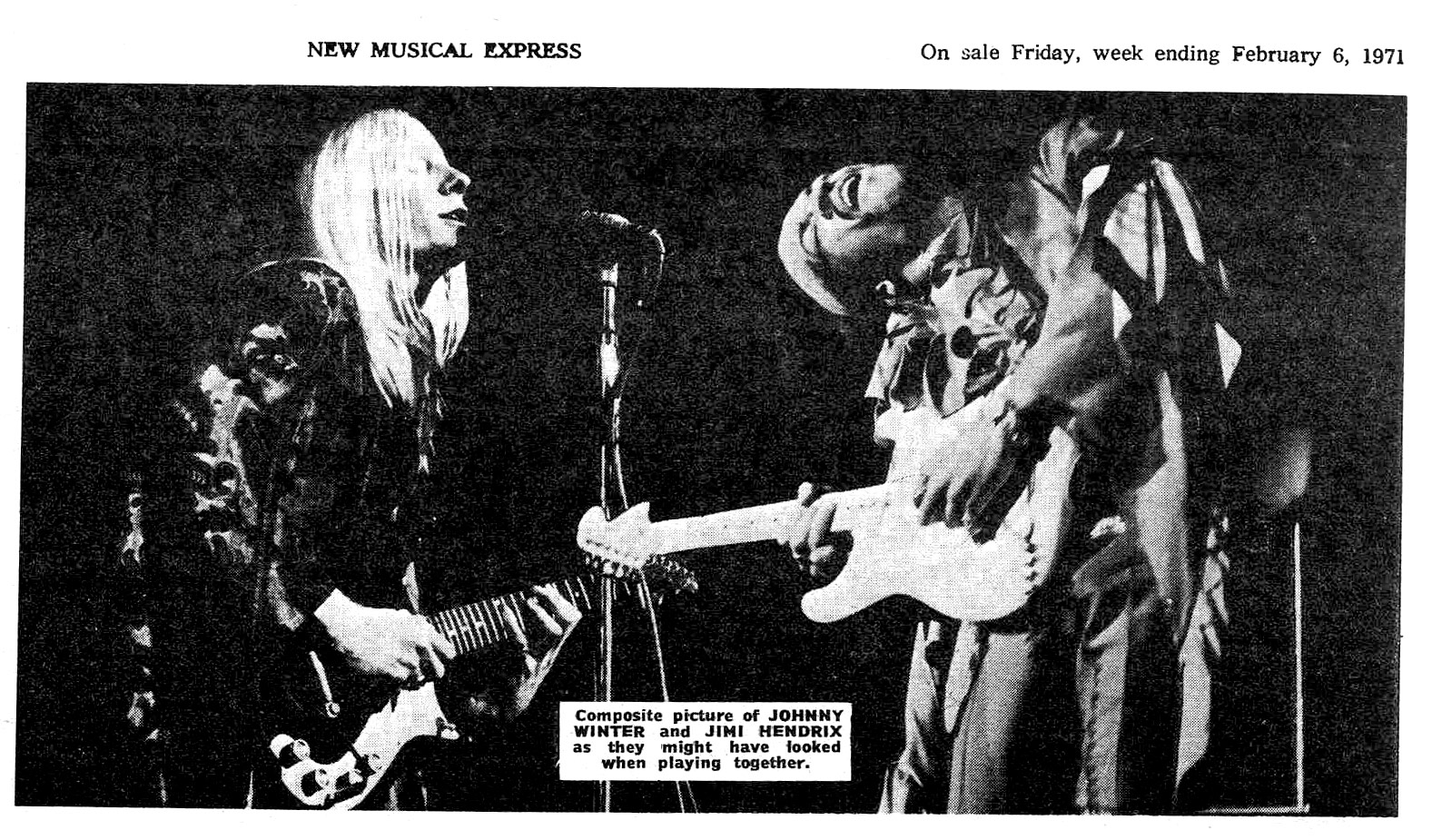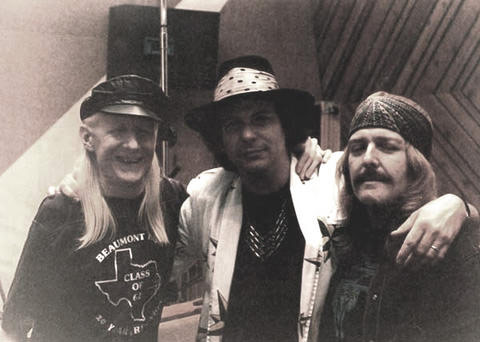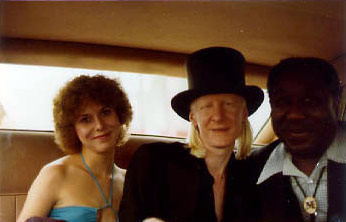Synopsis: Johnny explains why he split his old band (Uncle John Turner and Tommay Shannon) and formed the new band "And", with the former members of the McCoys (Rick Derringer , Randy Hobbs)
Interview by Nick Logan: "The hype that made him helped kill off his band.
I WAS making ten dollars a night playing what I'm doing now, and now I'm getting paid thousands for it." Johnny Winter, the albino blues guitarist who strummed through ten years of obscurity in his native Texas before discovery by the underground and a catapult-like riss to national fame, was back in London last week.
He's here in one of his favourite countries on a ten-day holiday -the first he's ever had-but had happily put himseif at the disposable of CSS to organise Interviews. "1 really Iove doing them."
CBS responded by turning his Mayfair hotel bedroom into a repllca of a statten at rush hour; photographers and journalists arriving every half hour and the inevitable overlaps becoming the order of the day. Winter took it all in his good natured stride, ordering refreshments for the evergrowing assembly and perching on the edge of his bed strumming his Gibson guitar.
Since May he has a new backing band, the result of a tie up with the old U.S. "Hang On Sloopy" hit group the McCoys that caused a good many disbelieving blinks on both sides of the Atlantic.
He had, he revealed, already decided to break up the old outfit before his May concerts here and had done so soon after they got home, explaining: " We reached the stage where we were stagnat. We started out ' as a white country blues group but in all the hype and bull . . . people thought we were another Cream or Jimi Hendrix. But we were not; we were just a blues group and the band was really good for that.
"People put lt down because the publicity had Ied them to believe that it was some kind of supergroup."
After two years together, Winter explains, he feit he and the band could go no further. "1 could not do what I wanted with the band. There wasn't anywhere really to go. I love the people the band but all we could done was keep on playing this sure things we had been playing before.
"I wanted a band where other people could contribute things . Ilke writing songs, because I consider myself a songwriter. wanted to do some original thing music. They just didn't like doing them and I wanted people who could put themselves into the tunes."
The McCoys, having a tough time with their record company and finding non-acceptance for work they saw as more creative than their bubblegum days, had been living right across the way" from Winter's home. "My manager Steve Paul was helping them get something together and when I decided to break up my own band I went over and talked to them and we jammed on a and have other people who could project themselves and with the old band Uncle John and Tommy were basically a side band."
His band still four strong, the back up men now are Rick Derringer, vocals/guitar, Randy Hobbs, vocals/bass, both one time McCoys, and Bobby Caldwell, drums. Caldwell recently replaced Randy Z, the member of the McCoys, who, according to Winter, went a bit out of his head and committed himself to hospital. Edgar Winter stayed behind to fill in an drums until a new man was found. "Bet. he's not a drummer," says Johnny, "most nights his hands would be covered in blood."
The three McCoys provided the back up for the guitarist's new CBS album and, Winter revealed, he had tried three of the tracks with the old band before they split. "But they just didn't feel that kind of couple of things and it just worked out so well.
"When they had 'Hang On Sloopy'," he argues, "they were all littte kids. Musicians were just musicians at that time; the record people thought musicians were kids and didn't know what was commercial. They said 'Do this and we will make you a rock and roll star.' After they had had all this the McCoys started to ask themselves what they were doing They had this bubblegum Label and people would not let them forget.' He himself didn't know what anyone with Jong hair." l response to expect. "lt might Everybody in the States, he have been really horrible but says, is looking for leaders. "They people just seem to accept the all want someone to teil them group. I thought they might say what to do and how to get out of we were selling out . Johnny this . . . and so they Look to music Winter's bubblegum and all that elans as leaders. I have tried to bull say I am a musician not a politic With the new band, Winter feels but it just doesn't seem pos- he is still playing in the style he to keep out of lt."














